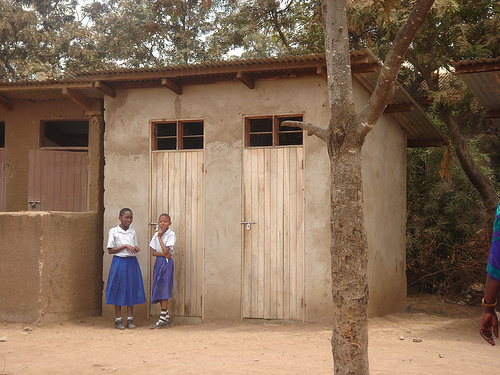
Sanitation and women’s rights are closely entwined. West Virginia barred women from jury duty until 1956, claiming courthouses lacked female toilets. In 1994 a Texan firm fired dozens of women rather than provide extra lavatories. Until 1993, female senators had to jostle with the tourists visiting Capitol Hill because no rest rooms were assigned to them.
In developing countries, unequal provision means more than just discomfort. Millions of women are forced to walk long distances to find some privacy, or wait for the cover of darkness before they can relieve themselves. Even though it is a basic need common to every human being, frightening experiences of violence that create fear, shame, and anger are not uncommon.
According to WaterAid, more than one in three women worldwide are living without even a basic pit latrine. Of these, 526 million women have no choice but to go to the toilet out in the open. One in three women (over one billion women worldwide) will also experience physical, sexual or emotional violence in her lifetime. For the world’s poorest women and girls, these two basic human rights violations often go hand in hand. One in three women is a shockingly high figure. The combination of insufficient sanitation, and violence against women, which both stem from gender-based discrimination, could seem intractable. But, there are solutions.
One is to raise awareness and stand up against violence. One Billion Rising is a movement created by Eve Ensler, the author of the Vagina Monologues, to tackle the issue of violence against women. Risings have been planned around the world in 199 countries, creating a Feminist Tsunami. Baltimore Rising is the local response to this international movement. The local event kicks-off at 5:30pm on Thursday, February 14th at the Washington Monument (699 N. Charles St, Baltimore). Visit the Facebook page and join the movement to WALK OUT, DANCE, RISE UP, and DEMAND an end to this violence. Not in Baltimore? Not a problem, click on the map to locate an event near you.
A second is for communities to get innovative with their campaigns. In Haryana, a northeastern state in India where the number of rural households with toilets has risen considerably from 29 percent in 2001 to an impressive 98 percent in the last five years, women are doing just that. The “No Toilet, No Bride” campaign, launched by the Ministry of Rural Development, has resulted in the construction of approximately 1.71 million toilets across the state. The movement takes advantage of the fact that Haryana suffers form a warped sex ratio, a result of India’s cultural preference for boys over girls. The scarcity of brides in the state helps prospective brides use their bargaining power to force their suitors to construct toilets for them before they marry.
That one in three women will experience physical and/or sexual abuse in her lifetime is unacceptable. That one in three women and girls don’t have safe access to a toilet is inexcusable. Access to safe, adequate sanitation is a basic human right. Being able to go to the toilet without the fear of rape, sexual assault, physical abuse or humiliation is a human right.
Change will not happen unless we can empower their voices. Now is the time to shout.








